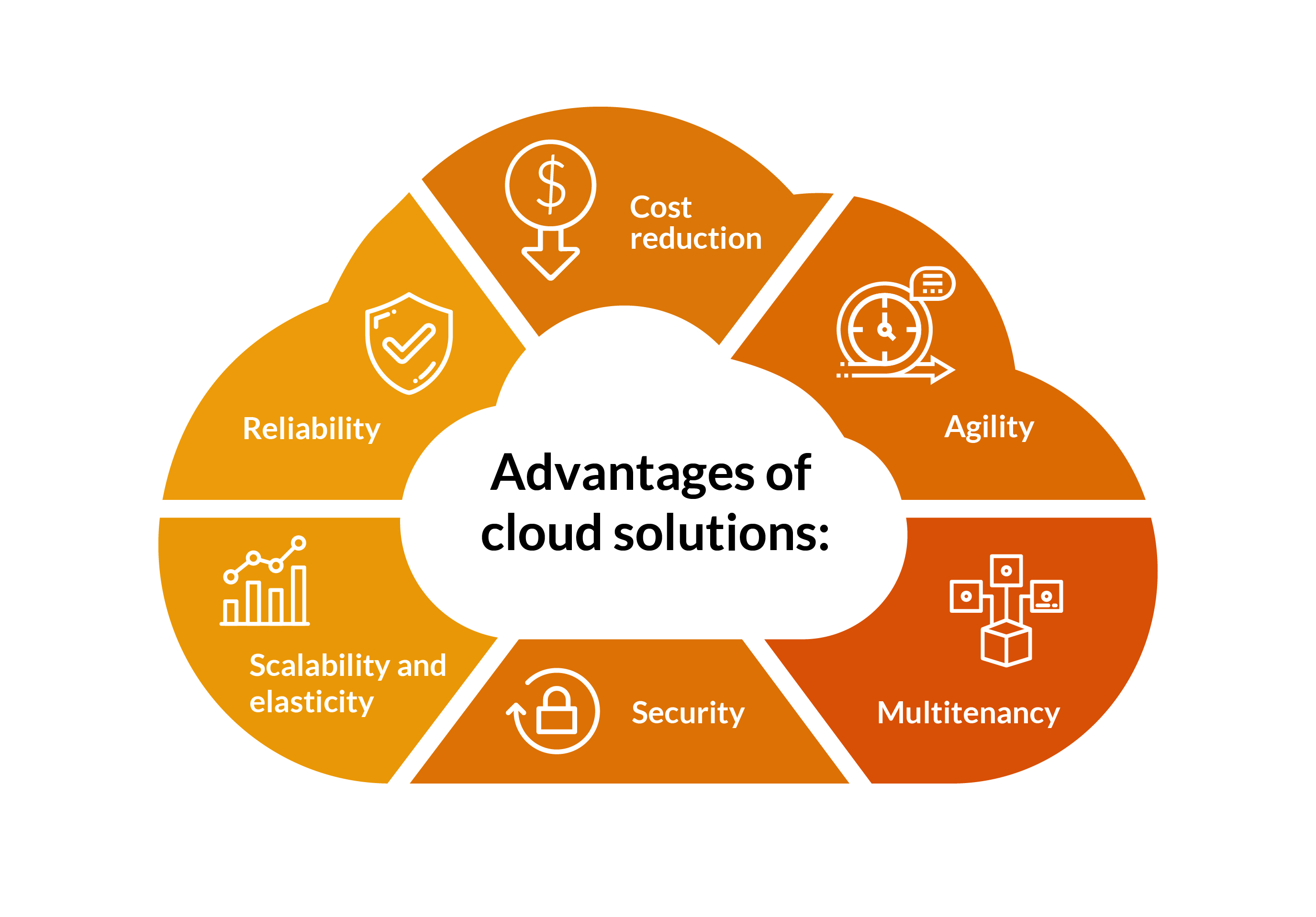Revolutionize Your IT Framework With Cloud Services
In the ever-evolving landscape of IT facilities, cloud solutions have emerged as a game-changer for companies looking for to enhance and improve procedures performance. The change towards leveraging cloud options supplies a myriad of advantages that can reshape the method organizations work, from maximizing costs to ensuring seamless scalability. Nevertheless, the genuine inquiry continues to be: How can companies properly navigate this transformative journey and harness the full capacity of cloud solutions to remain in advance in today's affordable market?
Advantages of Cloud Services
Cloud services supply many advantages to companies and services seeking to boost their IT infrastructure. In addition, cloud services give scalability, allowing companies to conveniently adjust their sources based on demand.
Another benefit of cloud solutions is boosted ease of access. By storing information and applications in the cloud, workers can access them from anywhere with an internet connection. This enhances collaboration and performance, particularly for remote or dispersed groups. Furthermore, cloud solutions supply boosted security procedures, such as data security, regular back-ups, and robust access controls. This aids secure sensitive information and makes certain compliance with information defense policies. Generally, the advantages of cloud solutions make them a compelling option for companies aiming to update their IT infrastructure and drive technology.
Migration Approaches for IT Framework
In the world of improving IT facilities, efficient migration approaches are critical for guaranteeing seamless changes and enhancing functional effectiveness. When intending the migration of IT facilities to the cloud, companies have to first perform a comprehensive assessment of their existing systems and workloads. This analysis helps in identifying which parts appropriate for movement, approximating expenses, and setting sensible timelines.
One common movement strategy is the "lift and change" approach, where existing applications and data are relocated to the cloud with minimal adjustments. While this method is fast, it may not completely take advantage of the advantages of cloud solutions (linkdaddy cloud services). An even more critical strategy entails rearchitecting applications to be cloud-native, making the most of the scalability and adaptability supplied by the cloud environment
Additionally, organizations can select a phased migration, where applications are moved incrementally to the cloud. This technique permits for screening and optimization at each phase, lowering the threat of disruptions to core company procedures. By meticulously planning and performing movement techniques, companies can efficiently change to the cloud while decreasing downtime and maximizing performance.
Enhancing Protection in the Cloud
Applying durable protection actions is crucial when transitioning IT facilities to cloud solutions, making sure information stability and discretion are preserved at all times. Safety and security in the cloud includes a multi-faceted approach that includes numerous layers of security.
In addition, solid gain access to controls and authentication mechanisms are important parts of cloud safety. Applying role-based gain access to control makes sure that only accredited workers can access sensitive data and perform certain actions within the cloud infrastructure. Multi-factor verification includes an additional layer of security by needing users to give several forms of confirmation prior to accessing vital sources.
Routine protection tracking, audits, and occurrence action treatments are essential for recognizing vulnerabilities and reacting promptly to any protection breaches. By continually enhancing and evaluating protection steps in the cloud, organizations can minimize risks and preserve a durable safety and security stance in the ever-evolving digital landscape.
Cost-Efficiency and Scalability
Cloud solutions offer an economical remedy for services looking to enhance their IT operations. By leveraging cloud sources, organizations can scale their framework up or down according to demand, eliminating the need to spend in pricey equipment that might become outdated rapidly.

Driving Advancement Through Cloud Adoption
Assisting in technical developments, cloud adoption empowers businesses to drive technology and remain competitive in today's rapidly advancing digital landscape. By leveraging cloud solutions, companies can enhance their operations, boost dexterity, and cultivate a culture of testing and creative thinking. The cloud gives a scalable and adaptable environment that urges the development of originalities and services without the restraints of typical IT infrastructure.
One of the essential means shadow fostering drives innovation is via allowing fast prototyping and testing of brand-new product or services. With cloud sources conveniently offered, companies can swiftly rotate up models, gather comments, iterate on designs, and bring cutting-edge solutions to market much faster than in the past. This sped up development cycle permits organizations to stay in advance of the contour and satisfy the altering demands of customers in real-time.
Furthermore, cloud services provide access to innovative technologies such as expert system, artificial intelligence, and big data analytics, which are vital for driving innovation in today's data-driven world. By using these innovations via the cloud, organizations can reveal important understandings, automate processes, and create individualized experiences that set them aside from rivals. Accepting cloud adoption not just reinvents IT infrastructure however additionally moves businesses in the direction of a future of continuous advancement and growth.
Final Thought

In the ever-evolving landscape of IT facilities, cloud services have arised as a game-changer for organizations seeking to increase and improve procedures effectiveness.Cloud solutions offer countless advantages to organizations and organizations looking for to improve their IT framework. In general, the advantages of cloud services make them an engaging option for organizations looking to improve their IT framework and drive technology.
Implementing durable safety procedures is critical when transitioning IT infrastructure to shadow services, making sure data integrity and privacy are kept at all times.In final thought, cloud solutions offer many benefits for transforming IT facilities, including cost-effectiveness, scalability, improved safety and security, and innovation opportunities.